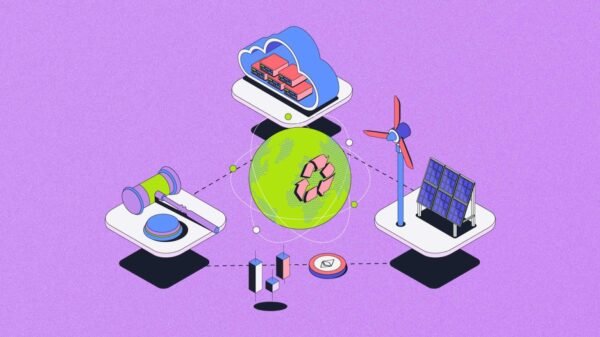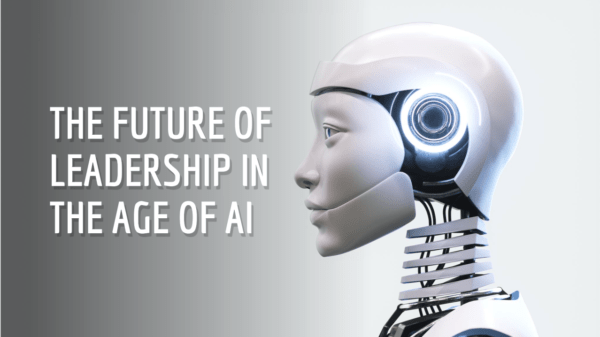Artificial Wombs and the Evolution of Pregnancy
“Step into a future where babies grow outside the womb, in the realm of artificial wombs.”
Key Takeaways:
- Artificial wombs offer a new way to grow babies outside the body.
- They could change how we think about pregnancy and childbirth.
- Science turned fiction into reality with artificial wombs.
- Modern artificial wombs imitate real womb functions.
- Artificial wombs might make pregnancies safer and reduce complications.
- They let more people choose how they become parents.
- Some challenges include dealing with early births and emotional impacts.
- Ethical questions arise about the bond between moms and baby
- Scientists, doctors, and ethicists work together to make artificial wombs safe and ethical.
- A mix of expertise guides this technology’s growth.
- Artificial wombs could change how we see gender roles and parenting.
- Besides humans, artificial wombs can help save endangered animals and study baby development, providing a unique look at early life stages.
- Challenges include copying natural womb conditions and considering ethics.
- We must balance technology growth with moral values
- Rules are crucial to develop and use artificial wombs responsibly.
- Everyone, no matter their income, should have access to this technology
- Sharing knowledge helps people understand artificial wombs.
- Overcoming fears and stigma needs everyone’s effort
- Artificial wombs present exciting possibilities and challenges.
- As we explore this new idea, we prioritize ethics and positive progress.
In the tapestry of human evolution, pregnancy has long been a revered and transformative experience, embodying the very essence of creation. Yet, like a mosaic missing a few crucial pieces, the pregnancy journey is not without its challenges and complexities. Enter the realm of artificial wombs – a concept that challenges the boundaries of traditional childbirth and opens the door to a future where the womb may no longer be confined to a human body. As the heartbeat of technology resonates with the rhythms of nature, the notion of artificial wombs has ignited a genuine dialogue, prompting us to reconsider not just the process of pregnancy but the very nature of life itself. In this exploration, we embark on a journey to unravel the layers of this groundbreaking concept, venturing into realms of science, ethics, and societal transformation. Can these engineering marvels redefine how we perceive and experience pregnancy, or do they raise a symphony of concerns that could alter the fabric of parenthood and human connection?
In a world where innovation knows no bounds, the concept of artificial wombs is a revelation that beckons us to the crossroads of science, ethics, and imagination. It’s a narrative that dances on the precipice of possibility, where the confines of a biological womb are replaced by the intricacies of technology and where the potential for life is nurtured within the embrace of innovation. This is more than a mere evolution; it’s a revolution that could fundamentally alter our understanding of reproduction, motherhood, and the very essence of being human.
Moreover, it is not one of science alone; it is a voyage that stretches across the landscapes of culture and perception. Like a thousand curious eyes, the public gaze scrutinizes and reflects upon this advancement, casting light on the realm of public opinion and cultural acceptance. We ponder the implications for gender roles, parenting dynamics, and a society where the very fabric of reproduction is rewoven. It’s a discourse that extends beyond laboratories and medical facilities, seeping into the air we breathe and our conversations.
The evolution of pregnancy may very well be on the precipice of a paradigm shift, and our journey begins by examining the core principles that fuel this revolutionary idea.
The Concept and Advancements of Artificial Wombs
Redefining Pregnancy: Exploring the Concept of Artificial Wombs
The traditional pregnancy journey is a symphony of nature and nurture, where a complex interplay of biology shapes the development of a new life within the confines of a woman’s body. From the initial spark of conception to the rhythmic pulse of a growing heartbeat, the experience has been an integral part of the human narrative. Yet, despite its profound beauty, it carries its share of challenges—ranging from maternal health risks to the medical complexities of childbirth. Within this canvas of possibilities, the concept of artificial wombs emerges, offering an alternative that challenges the traditional understanding of pregnancy. Picture a world where the womb is no longer confined to the body, where technology could provide a nurturing environment for embryonic development. The paradigm shift is awe-inspiring, and it beckons us to question not just the “how” of pregnancy but the “where” and “why.”
Technological Breakthroughs: Advancements in Artificial Womb Technology
From speculative science fiction to tangible reality, the evolution of artificial womb technology has been a journey marked by astounding progress. Over the years, what was once a distant dream has transformed into a tangible avenue of scientific exploration. From early experiments with animal embryos to the intricate mechanisms of modern artificial wombs, the strides taken in this field have been nothing short of remarkable. These remarkable devices now replicate the nurturing environment of a natural womb, sustaining developing fetuses through intricate fluid exchange, oxygenation, and nutrient delivery systems. It’s as much a testament to human ingenuity as to the deep-seated curiosity that drives us to push the boundaries of what’s possible.
Potential Benefits and Ethical Considerations
Revolutionizing Reproductive Choices: Benefits of Artificial Wombs
Imagine a world where the constraints of maternal health risks are significantly diminished and where the anxieties of complicated pregnancies echo the past. This is the potential promise of artificial wombs. This revolutionary advancement can redefine not just the experience of pregnancy but also the very notion of reproductive choice. By shifting the locus of fetal development from within a human body to the controlled environment of an artificial womb, the inherent risks associated with traditional pregnancies could be dramatically reduced. This isn’t just a step forward; it’s a leap into a future where aspiration rather than apprehension will drive pregnancy decisions. Moreover, the concept extends beyond health concerns, offering newfound empowerment to individuals who previously faced barriers to experiencing the journey of parenthood.
Ethical Implications and Societal Challenges
As the tapestry of innovation unfolds, weaving in the threads of ethics and societal considerations is imperative. The journey of a fetus within an artificial womb raises its own set of questions and challenges. Concerns about premature births and developmental milestones come to the forefront, as the intricacies of embryonic growth cannot be entirely replicated within a controlled environment. Moreover, the emotional and psychological landscape of motherhood could be profoundly altered. The intimate bond forged between a mother and a developing child is a cornerstone of human connection, and its dynamics in a world of artificial wombs warrant careful exploration. While science propels us into uncharted territory, ethical introspection remains our compass, ensuring that innovation remains firmly rooted in the values that define us.
The Intersection of Science, Medicine, and Society
Collaboration in Advancing Artificial Womb Research
The realization of artificial wombs isn’t a solo performance but a symphony conducted by a diverse ensemble of experts. Scientists, medical professionals, and ethicists converge at the crossroads of innovation to pioneer this remarkable field. Scientists lay the foundation with their meticulous research, striving to replicate the intricate dance of biological processes within an artificial environment. Medical professionals bring their expertise to the fore, translating scientific breakthroughs into tangible medical solutions that can transform lives. Ethicists, too, play a pivotal role in guiding this technology’s development along the path of morality and societal responsibility. The harmonious collaboration of these disciplines exemplifies the power of synergy as we collectively chart the uncharted waters of artificial wombs.
Shaping the Future: Artificial Wombs in a Changing Society
Innovation doesn’t exist in a vacuum; it reverberates through the fabric of society, catalyzing shifts in perspectives, norms, and expectations. Artificial wombs have the potential to be both a mirror and a catalyst for change, offering profound insights into gender roles and parenting dynamics. As the traditional boundaries of pregnancy expand, the concept of “parenthood” itself could evolve, ushering in a new era of inclusivity and shared responsibilities. Beyond social dynamics, economic and workforce implications loom large on the horizon. With the potential for reduced pregnancy-related health risks, the workforce could witness a transformative influx of skilled individuals who can now navigate their careers without the weight of traditional pregnancy constraints. The ripple effect is vast, touching everything from boardrooms to living rooms, creating a society that’s simultaneously shaped by and shaping the future of pregnancy.
Looking Ahead: Possibilities and Limitations
Beyond Reproduction: Unexpected Applications of Artificial Wombs
The potential of artificial wombs extends far beyond human reproduction, touching upon unexpected arenas where science and compassion intertwine. One remarkable avenue is the conservation of endangered species. With habitats dwindling and populations teetering on the brink, artificial wombs could serve as sanctuaries for species on the verge of extinction. By providing a controlled environment for embryonic development, we could give nature a helping hand and safeguard the biodiversity that enriches our planet. Furthermore, the scientific community’s pursuit of knowledge in fetal development could receive a significant boost. Artificial wombs offer a unique window into the early stages of life, enabling researchers to unravel mysteries that have long eluded us. From unlocking the secrets of developmental disorders to shedding light on the intricacies of human growth, the applications are as boundless as the questions they seek to answer.
Challenges and Roadblocks to Consider
Challenges often emerge as a counterpoint to progress in the symphony of innovation. While artificial wombs hold immense promise, they’re not without their limitations. One pivotal obstacle is mimicking the natural womb environment. The intricate choreography of biological processes, from hormone cascades to nutrient exchanges, presents a formidable challenge for even the most advanced technology. Striking the delicate balance between pushing the boundaries of technological advancement and navigating ethical considerations, is another tightrope walk. As we forge ahead, we must tread carefully to ensure that the journey is characterized not only by scientific leaps but also by a steadfast commitment to the values that define our humanity.
Navigating the Path Forward: Policy, Accessibility, and Public Perception
From Lab to Legislation: Policy Frameworks for Artificial Wombs
As the dawn of artificial wombs beckons, the need for a robust policy framework becomes paramount. The convergence of pioneering technology and delicate ethical considerations demands a regulatory landscape that fosters responsible innovation. Striking the balance between progress and precaution is essential to steering the ship of scientific advancement along a steady course. Equally important is the question of accessibility. As this groundbreaking technology emerges, ensuring that it’s available to all, regardless of socioeconomic status, is a challenge that underscores the very essence of equality. The future we strive to build should be one where the benefits of artificial wombs are accessible to all who stand to benefit.
Public Perception and Cultural Acceptance
Innovation thrives not only in laboratories but also in the hearts and minds of individuals. As the concept of artificial wombs permeates public consciousness, shaping public opinion takes center stage. Education and awareness become the conduits through which society faces this profound transformation. The journey involves disseminating accurate information, debunking myths, and fostering a nuanced understanding of the technology’s potential and limitations. Overcoming stigmas and fears associated with artificial wombs is a collective endeavor that draws upon our ability to adapt, evolve, and embrace change. As cultural acceptance evolves, a new chapter in human history is marked by the convergence of science, society, and the shared journey of progress.

















































